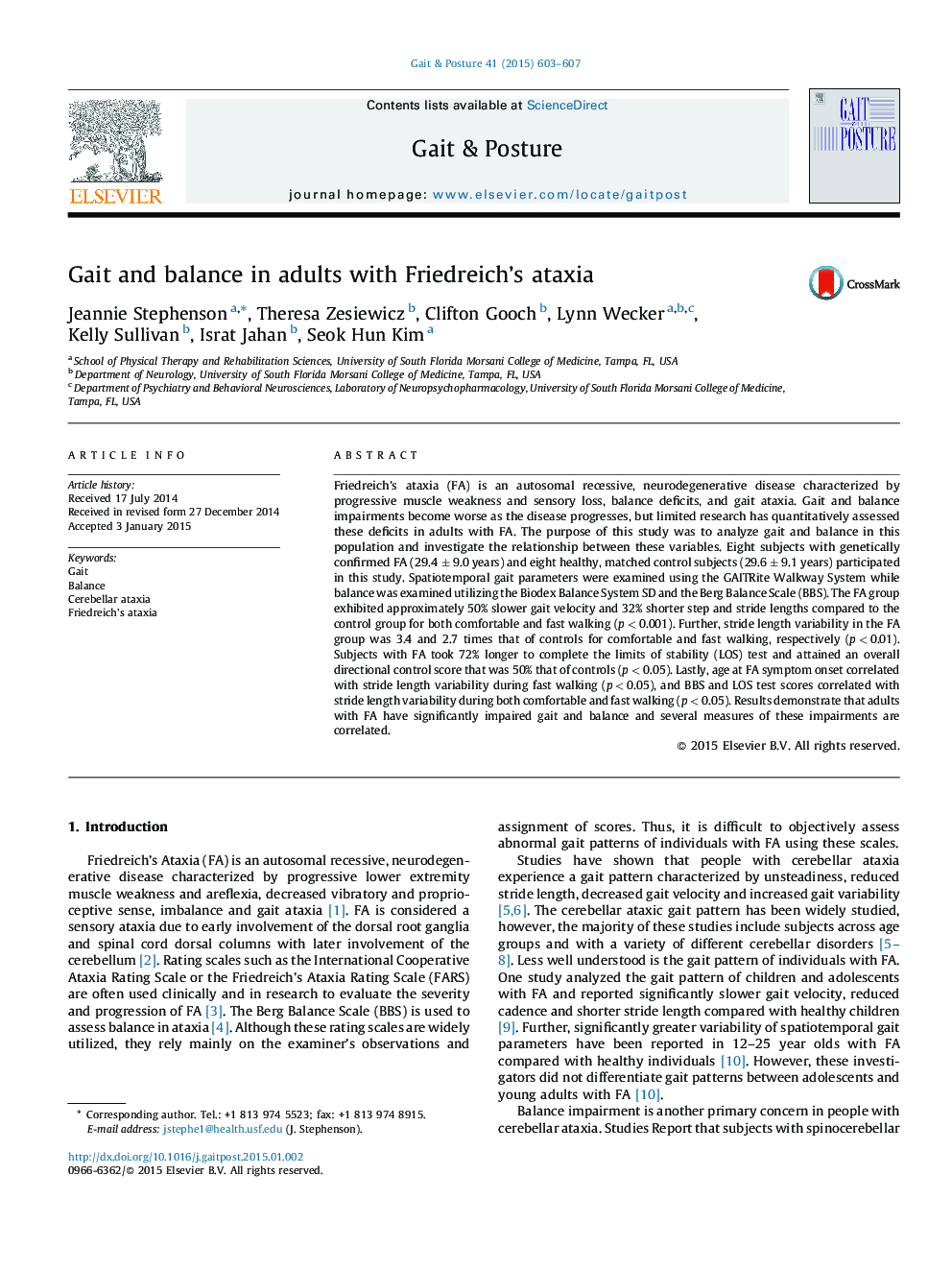| کد مقاله | کد نشریه | سال انتشار | مقاله انگلیسی | نسخه تمام متن |
|---|---|---|---|---|
| 6206158 | 1265640 | 2015 | 5 صفحه PDF | دانلود رایگان |
- Adults with FA have impaired spatiotemporal gait parameters and dynamic balance.
- Age at FA symptom onset negatively correlates with stride length variability during fast walking.
- Static and dynamic balance in adults with FA correlates with stride length variability.
- Decreased gait velocity and increased gait variability may predict future decline in walking.
Friedreich's ataxia (FA) is an autosomal recessive, neurodegenerative disease characterized by progressive muscle weakness and sensory loss, balance deficits, and gait ataxia. Gait and balance impairments become worse as the disease progresses, but limited research has quantitatively assessed these deficits in adults with FA. The purpose of this study was to analyze gait and balance in this population and investigate the relationship between these variables. Eight subjects with genetically confirmed FA (29.4 ± 9.0 years) and eight healthy, matched control subjects (29.6 ± 9.1 years) participated in this study. Spatiotemporal gait parameters were examined using the GAITRite Walkway System while balance was examined utilizing the Biodex Balance System SD and the Berg Balance Scale (BBS). The FA group exhibited approximately 50% slower gait velocity and 32% shorter step and stride lengths compared to the control group for both comfortable and fast walking (p < 0.001). Further, stride length variability in the FA group was 3.4 and 2.7 times that of controls for comfortable and fast walking, respectively (p < 0.01). Subjects with FA took 72% longer to complete the limits of stability (LOS) test and attained an overall directional control score that was 50% that of controls (p < 0.05). Lastly, age at FA symptom onset correlated with stride length variability during fast walking (p < 0.05), and BBS and LOS test scores correlated with stride length variability during both comfortable and fast walking (p < 0.05). Results demonstrate that adults with FA have significantly impaired gait and balance and several measures of these impairments are correlated.
Journal: Gait & Posture - Volume 41, Issue 2, February 2015, Pages 603-607
